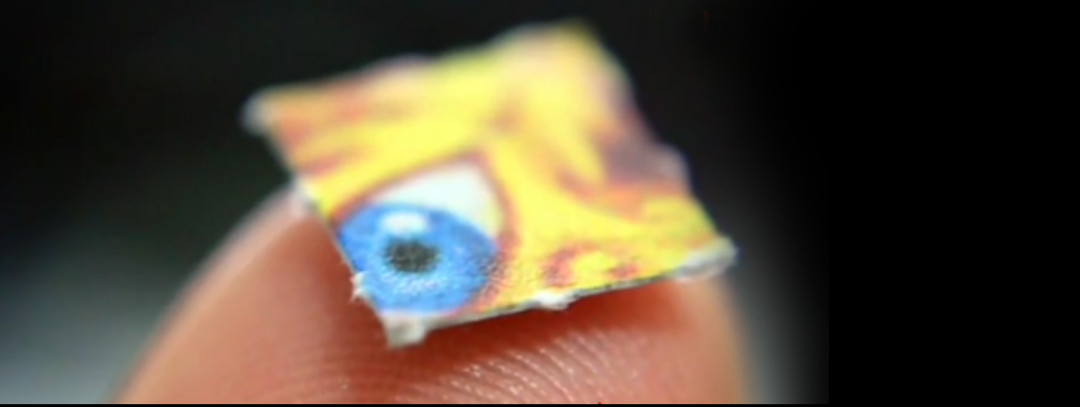About a drug: LSD

Lysergic acid diethylamide (or LSD) has many street names including yellow sunshine, window pane and Microdot but it is most commonly known as acid.
It is mainly used recreationally, as an entheogen (a fancy word for a chemical that brings you closer to the divine) and – in the 60s and 70s and again more recently – in psychedelic therapy for alcohol dependence and anxiety.
In its pure form LSD has no colour, odour or taste. It is usually taken orally via absorbent blotting paper, in a sugar cube or in gelatine. It can also be administered by injection when in liquid form. It is generally accepted to be non-addictive and is relatively non-toxic.
LSD’s effects include altered thinking processes, visual hallucinations and an altered sense of time. However, an LSD trip can vary greatly from person to person. One trip can also be very different to another for the same person, and trips can have long-term psycho-emotional effects. Some users say LSD has caused significant changes in their personality and life perspective.
Adverse psychiatric reactions such as anxiety, paranoia and delusions are possible, and LSD may temporarily impair the ability to make sensible judgements and understand common dangers, so users can become more susceptible to accidents and injury. It may cause temporary confusion, difficulty with abstract thinking and impaired memory or attention span. The January 2013 edition of the Journal of Addiction Medicine, for example, reports a case where a man with no diagnosed mental illness manually removed his own testicles during his first LSD trip. Fortunately, that sort of thing doesn’t seem to happen very often.
Flashbacks, in which an individual experiences an episode of some of LSD’s subjective effects long after the drug has worn off, are also a reported phenomenon. No definitive explanation is currently available for these.
The United Nations Convention on Psychotropic Substances requires its parties to prohibit LSD for recreational use. Hence, it is illegal in most countries, including New Zealand, the United States, Australia and most of Europe. However, medical and scientific research with LSD in humans is permitted under the Convention.
In New Zealand, LSD is classified as a Class A drug under the Misuse of Drugs Act 1975. This means it attracts the highest penalties possible for manufacture and sale, including life in jail. Possession can attract up to six months imprisonment, a $1,000 fine or both.
According to the Drug Use in New Zealand Survey 2007/2008 published in 2009, 7.3 percent of 16–64-year-olds have used LSD, and 1.3 percent of 16–64-year-olds used it in the previous 12 months.
LSD was first developed in 1938 by Dr Albert Hofmann at the Sandoz pharmaceutical company in Basel, Switzerland. It was synthesised from ergotamine, a chemical derived from ergot, a grain fungus that typically grows on rye. But he didn’t discover its psychedelic properties until 1943.
Sandoz introduced it commercially in 1947 under the trade name Delysid as a drug with various psychiatric uses, and it quickly became a therapeutic agent that appeared to show great promise in the treatment of alcohol dependence syndrome and pain relief.
Some psychiatrists believed LSD helped patients unblock repressed subconscious material. A 1959 study published in the Quarterly Journal of Studies on Alcohol concluded: “The root of the therapeutic value of the LSD experience is its potential for producing self-acceptance and self-surrender.”
In the 1950s, Central Intelligence Agency (CIA) officials thought LSD might be useful for mind control and chemical warfare and began a research programme codenamed Project MKULTRA. Experiments included administering LSD to CIA employees, military personnel, doctors, other government agents, prostitutes, mentally ill patients and members of the general public in order to study their reactions, usually without the subject’s knowledge. LSD was eventually dismissed by CIA researchers as too unpredictable in its results, and Project MKULTRA was scrapped in 1973.
LSD became very popular as a recreational drug among 1960s counterculture enthusiasts, the most prominent of whom was probably American psychologist Timothy Leary (famous for the catchphrase “tune in, turn on and drop out) and whom President Richard Nixon once described as “the most dangerous man in America” for his pro-psychedelics stance. LSD became a prohibited substance in the US with the adoption of the UN Convention in 1971.
The psychiatric use of LSD is enjoying a small renaissance with organisations such as the Beckley Foundation, the Multidisciplinary Association for Psychedelic Studies (MAPS), the Heffter Research Institute and the Albert Hofmann Foundation co-ordinating research into the medicinal and spiritual uses of LSD and related psychedelics. New clinical LSD experiments in humans started at MAPS in 2009 for the first time in 35 years.
Recent news

Untreated ADHD leading to addiction and drug harm
A new report shows New Zealand’s failure to adequately diagnose and treat ADHD is likely leading to significant drug harm, including from alcohol and nicotine.

Report: Neurodivergence and substance use
Our latest report pulls together international evidence and local experiences of how neurodivergence impacts drug use

What researchers at University of Auckland are learning from giving people microdoses of LSD
‘Microdosing’ psychedelics involves taking small, repeated doses of a psychedelic drug. Researcher Robin Murphy talks us through the latest Auckland University microdosing study.

